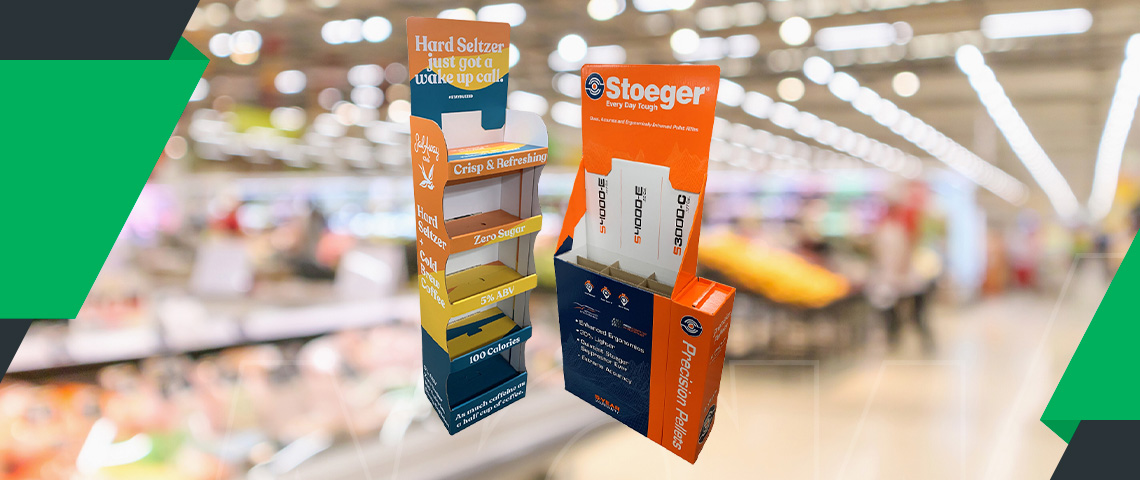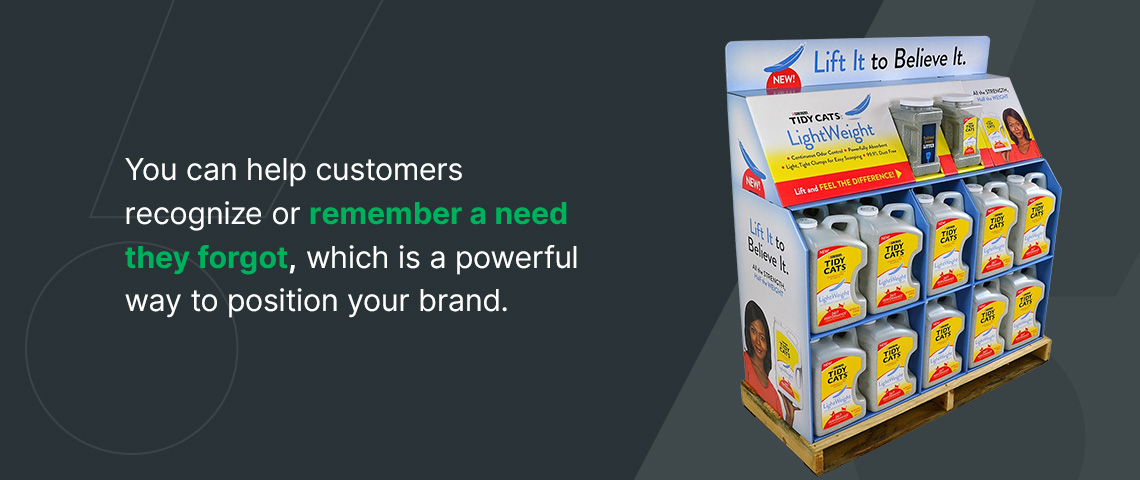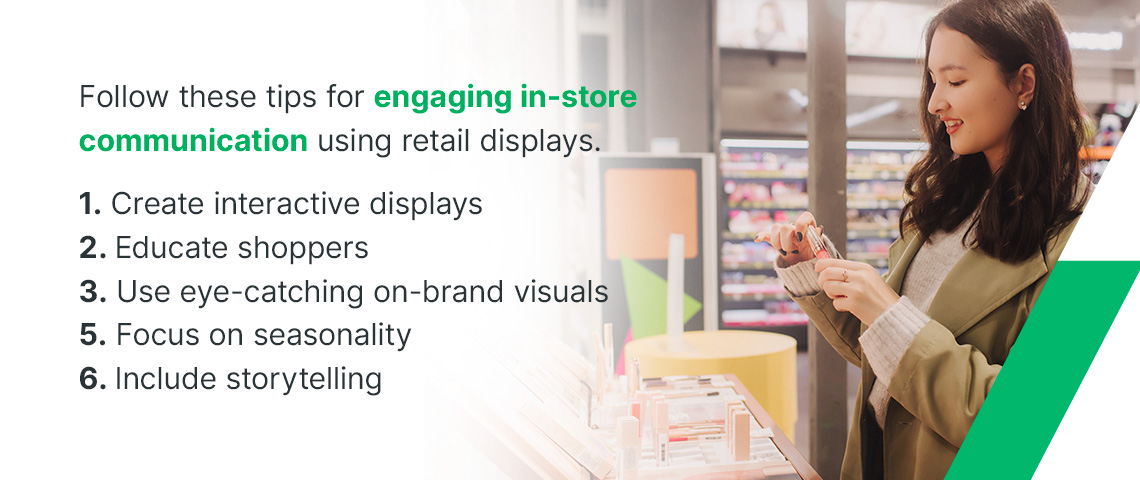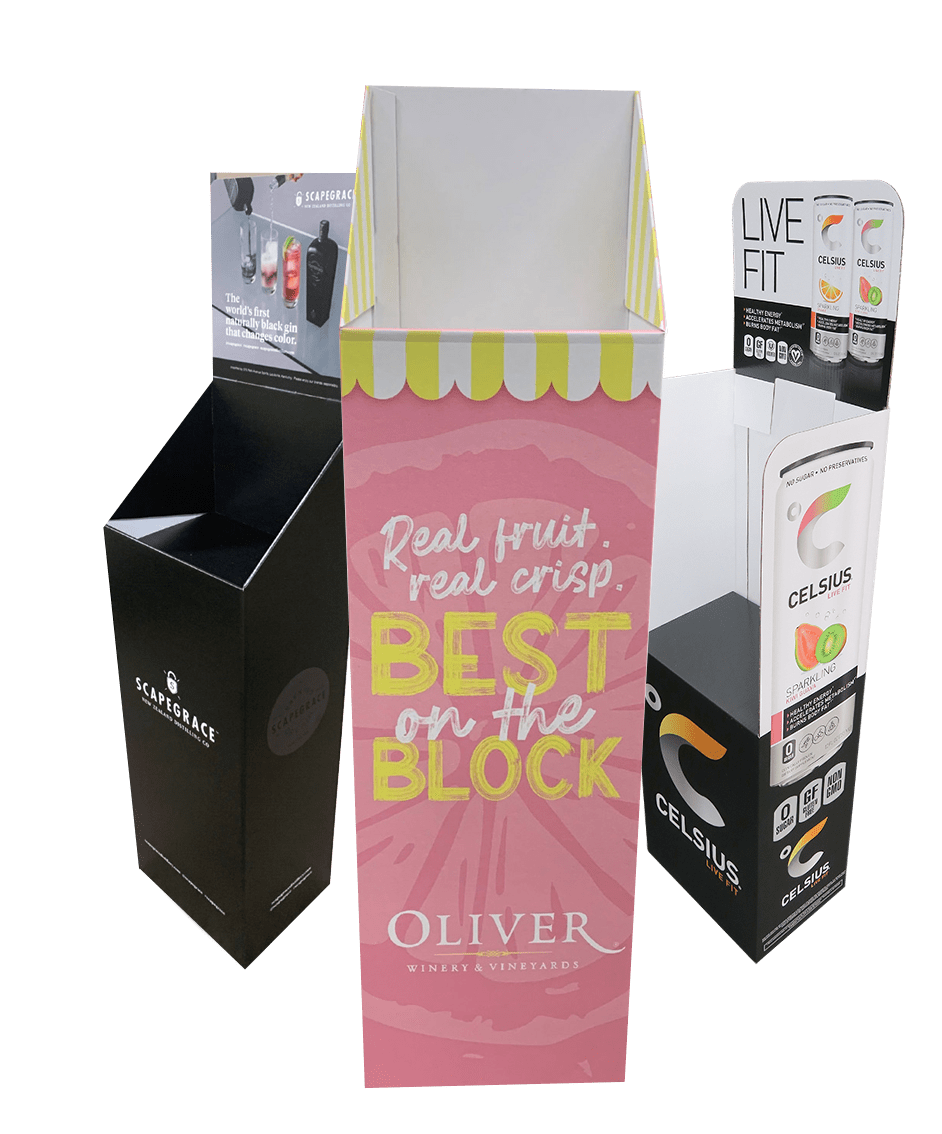Many species communicate, but humans have taken it to another level, going beyond written and spoken language to a persuasive combination of words and graphics that can connect people with products in seconds. Though communication media have changed over the years, they continue to inform and motivate people to spend money.
As our needs have evolved, so has our communication. Yet one constant remains — its importance for social cohesion, persuasion and self-expression. In-store communication and visual merchandising are a testament to the potential of communication, as the visual presentation of products is part of storytelling in retail and subtly expresses your products’ benefits.
The Power of In-Store Communication
A dynamic and enticing visual representation of your products can create a connection between your brand and the customer just before purchasing. Effective communication and expression are essential for companies, and retail displays promote your offerings at that moment and give customers a taste of the experience they can gain when they use your products.
Shoppers show a more significant commitment to the products they notice first, and in-store communication places your product in people’s sights at the last stage of shopping. When someone enters a store, they’re already planning to buy something, and a short, powerful and immersive message can make them purchase one of your products. You can help customers recognize or remember a need they forgot, which is a powerful way to position your brand.
How In-Store Communication Has Changed Over Time
Visual merchandising has always been a compelling way to position products at the forefront of people’s minds. From Gutenberg’s printing press in the 1440s to the first billboard in New York in 1835, marketing strategies have used clever images and words to create a need in their consumers.
While customer expectations have changed, visual merchandising is still an effective medium in the digital age. People like in-store advertising and trust its message, making it as persuasive today as it was throughout the last century. In some ways, in-store advertising has come full circle, with many sustainability-focused consumers caring about how organizations approach their marketing and more likely to connect with eco-friendly displays.
Strengths of Traditional Communication in Retail
Traditional media refers to all forms of communication that were prevalent before the rise of the internet. TV, radio, printed ads and billboards are conventional news, entertainment and advertising sources. Despite the advancements in digital communication channels and e-commerce, brick-and-mortar retail remains relevant today with unique benefits.
- Reach and brand awareness: Traditional media has a broad reach through television, radio and print ads, especially with older generations. Because of the repetitive exposure, traditional media can simultaneously increase brand recognition and recall to diverse audiences.
- Credibility and trustworthiness: Since traditional media have existed for so long, consumers tend to trust them more than digital media. Even online platforms of time-tested media brands carry the perception of being more reliable and authoritative.
- Tangibility and permanence: Compared to digital media, traditional media’s physical presence gives them a longer “shelf life,” providing repeated exposure to potential customers.
- Multisensory experience: Traditional media can engage many senses and emotions. Imagine the smell of freshly baked rolls, a familiar ad jingle you still remember today or the feeling of a massage chair you tried in a store once.
- Local market targeting: Traditional media can reach specific audiences in a local market. It also connects businesses easily with the local community.
- Cost-effectiveness: Digital ads can be more cost-effective than traditional ads. But, as more businesses shift their advertising budgets to digital platforms, less competition remains in conventional media channels, leading to lower ad rates and less bidding pressure.
- Less advertising clutter: Consumers spend a lot of time online, where advertising is inescapable. While digital ads can get lost in the crowd, B2C companies are increasing their traditional advertising spending and experiencing more engagement.
How Custom Displays Can Help You Communicate Your Brand
The visual presentation of your products can change consumer perceptions and allow consumers to connect with your brand message and values in many ways.
- Telling a story: Inspirational content can be more effective than offering people a deal. Using visual merchandising to tell a story about your brand history and products can evoke emotions and connect with customers to create brand loyalty. Visual displays with a consistent and emotive narrative translate into memorable shopping experiences.
- Increasing trust: Custom displays are more than an eye-catching palette. They provide customers with the information they need to trust your brand. Your strategy could include customer reviews and statistics highlighting how others have interacted with and learned to trust your products.
- Educating shoppers: Today’s consumers have more agency than ever before. Empowering them further with information about your products’ features and benefits allows them to make educated decisions.
- Promoting cross-selling: Cross-selling encompasses many effective retail strategies. Suggesting complementary products via custom retail displays can increase customer satisfaction and add value.
- Creating a shopping experience: Custom displays can immerse your customers in a complete shopping experience, presenting visually appealing information and highlighting products that add value to their lives.
Tips for Communicating Using Retail Displays
Effective retail displays are reliable, on-brand, appealing and relevant to customers. Follow these tips for engaging in-store communication using retail displays.
- Create interactive displays: Give shoppers a chance to try products by appealing to the five senses. Digital media lack multisensory experiences, especially touch, smell and taste.
- Educate shoppers: Retail displays are an excellent way to share information about product features or benefits. Use technology to inform, educate and persuade potential buyers.
- Use eye-catching on-brand visuals: Once you identify the display’s target audience, use colors and lighting to add visual appeal and place the display in a strategic location to draw attention. Be consistent with your branding and the marketing you do on other channels.
- Focus on seasonality: Showcasing products that are relevant to different seasons or life events can drive sales and increase customer satisfaction. Research and plan seasonal merchandising strategies to create retail displays highlighting these products and themes.
- Include storytelling: Stories make products more appealing. Use the power of brand storytelling to entertain, educate or connect with customers.
Use any of these unique retail display ideas to create a memorable and enjoyable shopping experience for customers. In turn, they will remember how your brand made them feel.
Design Your Next Display with Creative Displays Now!
There are various ways to communicate at the point of sale, from custom floor displays to countertop displays. Creative Displays Now has over 60 years of experience in the display and packaging business and can help you transform your in-store communication from design to distribution.
If you want to make history with your in-store marketing communication, contact us today to increase brand awareness and drive your sales.







